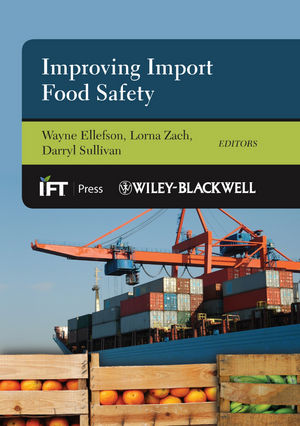How to Deal With Foodservice Sector Complaints and Crises

Several years ago, The New Yorker magazine carried a cartoon by the “Dean of Sophisticated Humor” and long-time New Yorker cartoon editor, Lee Lorenz. It was a drawing of a fellow nonchalantly walking by a restaurant and looking rather deadpan at the establishment’s name emblazoned across its window: The Is Everything OK, Folks? Restaurant.
Aside from the comment on our times and a perfectly good, if not humorous name for a restaurant, I’ve always wondered if this very question that is commonly posed to diners during the course of a meal by wait staff is part of our cultural politeness or an attempt at preemptive risk management. From experience, I can tell you that the question is usually answered by an affirmative nod of the head (since it’s always asked when our mouth is full), or under some circumstances, we may utter a plea or minced oath about the rarity or well-doneness preference of our steak or spiciness of our venture into exotic cuisine. If we happen to send anything back to the kitchen, it is only a slight inconvenience for the diner and the chef. However, if anything is truly not OK, it goes beyond a mere inconvenience: it becomes a crisis.
Crises not only involve the patron and the business, but they also bring in the health department and, if severe enough, the press and legal community. I think I speak for the sanitarian profession when I say that all crises can be minimized or avoided altogether. Crises are prevented by following some simple commonsense guidelines and by using available tools such as the Hazard Analysis and Critical Control Point (HACCP) and food defense programs, employee/manager food safety education, and by incorporating those few commonsense guidelines into a working policy for the establishment.
When Everything is Not OK
In the world of foodservice, a crisis is defined as a business disruption that stimulates regulatory intervention and possibly media coverage. The resulting scrutiny by the regulators and the public will affect normal operations and could have a political, legal, financial and governmental impact on the business. There are only four basic causes of a business crisis:
• Acts of God (i.e., storms, earthquakes, floods, fires, etc.)
• Mechanical problems (i.e., equipment and utility failures and malfunctions, etc.)
• Human errors (i.e., cross-contamination, poor personal hygiene, miscommunication, etc.)
• Poor management decisions or indecision (i.e., purposely circumventing regulations, inattention to details, failure to enforce policy, etc.)
I am convinced that most foodservice crises fall into the last category—the result of management’s inaction when informed about a problem that eventually takes on a life of its own and grows into a crisis situation. Poor managerial judgment followed in short order by human error a crisis makes.
Crisis events generally fall into two basic types. These are based on the length of warning time from onset of the crisis situation to discovery. The most disruptive is a sudden crisis that occurs without warning and is likely to generate news coverage and may adversely impact the employees, customers and suppliers.
A sudden crisis may be an unexpected business-related accident or incident resulting in significant property damage that will disrupt normal business operations including disruption of utility services. Another variant of the sudden crisis is the death, serious illness or injury of management, employees and customers as the result of a foodborne illness or other food-related misadventures. However, more on these issues in future columns.
The other type of crisis, into which complaints are grouped, is referred to as a latent or “smoldering” crisis. This is any serious business problem that is not generally apparent or known. The latent crisis may generate negative news coverage if or when it goes public and could result in more than a predetermined amount in fines, penalties, legal damage awards, unbudgeted expenses and other costs. Examples of this type of crisis include serious health department or occupational safety violations that could result in fines or legal action; customer allegations and complaints and actions by disgruntled employees, and possibly, the discovery of serious internal problems that will have to be disclosed to employees, customers, vendors and government officials. By far the precursor of the greatest number of latent crises, particularly those caused by management decision or indecision, is the result of consumer complaints that go without resolution. The “Is everything okay, folks? No!” scenario.
Regardless of type of crisis, however, most are preventable. Even with a Katrina-type disaster, or full-blown foodborne outbreak, the impact can be minimized with good preplanning and an eye toward due diligence in business. It goes without saying that adherence to applicable laws, codes, rules and regulations are not only the first line of prevention but also the first line of defense. And so it is with consumer complaints.
In my experience, the crises resulting from consumer complaints outnumber all other factors by an order of magnitude. When a sanitarian hears, “And I want to know what you’re going to do about it?!”, I can assure you that the problem will not go away without some intervention or other appropriate action on the part of the retail food establishment operator. We’ve learned that there is always some basis of fact to any complaint and that inaction will inevitably turn a complaint into a crisis.
Sure there are chronic complainers but for the most part we know how to deal with them. However, complaints have patterns, and even those that seem frivolous can point to food-related problems within a restaurant or community. By charting and sorting the complaints by area, date, type, and so on, we can gauge the degree to which our oversight and enforcement activities are effective or ineffective as the case may be. We ultimately use the complaint patterns to strengthen our educational and enforcement programs.
Turn That Frown Upside Down
There are two strategies we use to respond to a complaint; both are valid. The choice is determined by available information. The first is similar to a forensic investigation where we have a great deal of information and therefore we can approach a complaint using the null hypothesis to try to disprove the allegations. This stratagem cuts to the chase and reveals a cause-and-effect relationship. The owner is informed about the complaint’s validity and is left to his or her own devices to resolve the problem. It is thorough and fast.
The second complaint investigation strategy takes prevention into account in a well-meaning manner but it goes about it via a circuitous route. It is similar to a sampling strategy commonly known as “snowball sampling.” By definition, snowball sampling is a special method used when the desired sample characteristic is rare, as in a complaint or if little information regarding the complaint is known. It relies on referrals from initial complainants and/or inspection findings to generate additional complaints and findings. In other words, a targeted deficiency will result in identifying other deficiencies that in some way are connected to the original complaint. When this inspection paradigm is used, it comes at the expense of introducing bias because the technique itself reduces the likelihood that the inspection does not represent a good cross-section of the foodservice operation that led to the complaint in the first place. It’s like going the hospital for a full medical workup when all you needed was a Band-Aid. It does not take a vivid imagination to envisage the outcome. This technique actually works to the benefit of the sanitarian rather than the complainant or business. It broadcasts everything.
Dealing with complaints and latent crises is as much an art as it is a science. So what can be done by the retail food operator to minimize the consequences of a complaint or complaint investigation run amok? The short and simple answer is to respond quickly to the complainant and inform the local sanitarian. Be candid, truthful, obliging and cooperative. Consider the complaint as a learning tool. To help usher things along, the retail food operator should gather and provide to the public health inspector the following information with as much detail as possible:
• Consumer’s name, address and telephone number
• Date and time of the incident and when the complaint was received
• Nature of the complaint and a detailed description of the food product(s) involved and the circumstances of the complaint
• Name of the person who handled the initial complaint and documentation of the corrective actions or resolution of the complaint.
By providing this information, the investigation will more likely be straightforward, far less intimidating and quickly brought to a conclusion. In addition, take a lesson from HACCP by establishing corrective actions to be taken, once the causes are identified, and establishing procedures to verify that the corrective actions are being implemented. In so doing, the “And I want to know what you’re going to do about it?!” actually is taken care of and a crisis is averted or drastically minimized.
By way of further information, there is an excellent publication, albeit targeted for the food processor, which details the many variables in complaint adjudication: A Manual for Successful Resolution of Consumer Complaints in the Food Industry, 2nd edition, 1997. This spiral-bound how-to manual was written and edited by the Claims Division of the National Food Processors Association (now the Food Products Association), and is published by and available through the Food Processors Institute, Washington, DC (fpi-food.org). It is a “must read” and handy reference for everyone in the industry.
Forensic sanitarian Robert W. Powitz, Ph.D., MPH, RS, CFSP, is principal consultant and technical director of Old Saybrook, CT-based R.W. Powitz & Associates, a professional corporation of forensic sanitarians who specialize in environmental and public health litigation support services to law firms, insurance companies, governmental agencies and industry. For more than 12 years, he was the Director of Environmental Health and Safety for Wayne State University in Detroit, MI, where he continues to hold the academic rank of adjunct professor in the College of Engineering. He also served as Director of Biological Safety and Environment for the U.S. Department of Agriculture at the Plum Island Animal Disease Center at Greenport, NY. Among his honors, Powitz was the recipient of the New Jersey Environmental Health Association’s 2006 Harry R.H. Nicholas Award, which recognized Dr. Powitz’s outstanding and dedicated service to the advancement of public and environmental health in New Jersey. He is the first to hold the title of Diplomate Laureate in the American Academy of Sanitarians, and also is a Diplomate in the American Academy of Certified Consultants and Experts and with the American Board of Forensic Engineering and Technology.
Dr. Powitz welcomes reader questions and queries for discussion in upcoming columns, and feedback or suggestions for topics you’d like to see covered can be sent to him directly at sanitarian@juno.com or through his website at www.sanitarian.com.
Looking for a reprint of this article?
From high-res PDFs to custom plaques, order your copy today!








